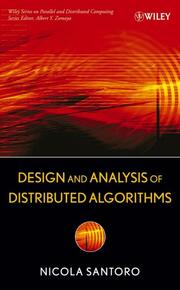Detailansicht
Design and Analysis of Distributed Algorithms
Wiley Series on Parallel and Distributed Computing
ISBN/EAN: 9780471719977
Umbreit-Nr.: 1484022
Sprache:
Englisch
Umfang: 608 S.
Format in cm:
Einband:
gebundenes Buch
Erschienen am 14.11.2006
Auflage: 1/2006
€ 199,00
(inklusive MwSt.)
Nachfragen
